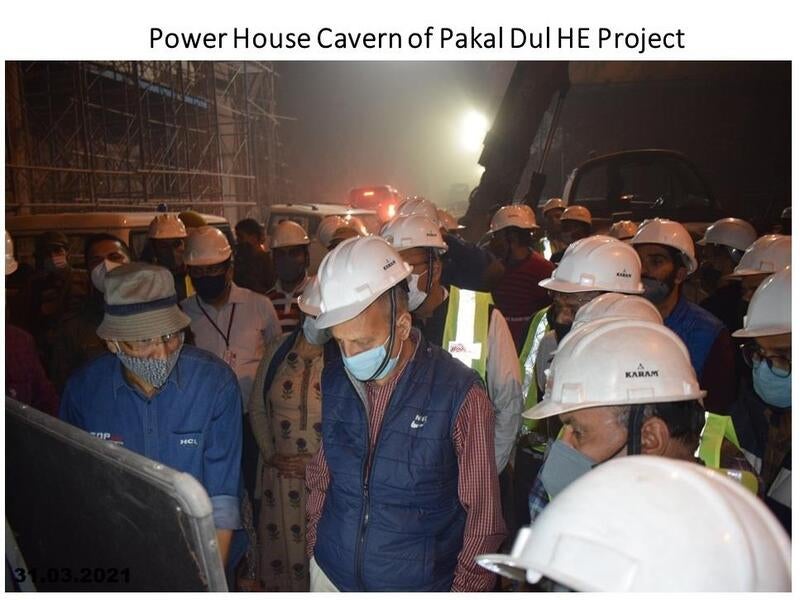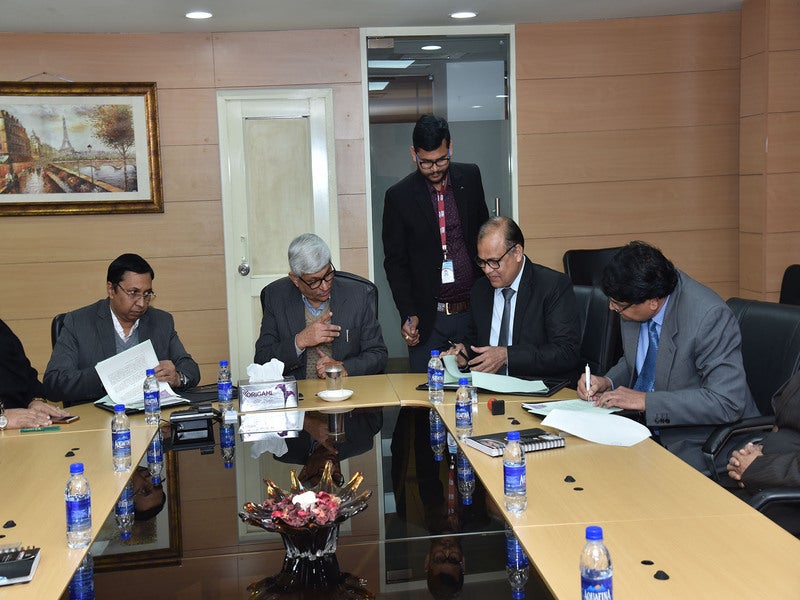The Pakal Dul project is a 1GW hydroelectric power station under construction in Jammu and Kashmir (J&K), India.
It is being developed by Chenab Valley Power Projects (CVPP), a joint venture of National Hydroelectric Power Corporation (NHPC, 49%), Jammu and Kashmir State Power Development Corporation Limited (JKSPDC, 49%), and PTC India (2%).
The construction works on the £1.41bn ($1.91bn) project were started in May 2018 with commissioning expected by July 2025.
At full capacity, the Pakal Dul power station is expected to generate approximately 3,330 million units (MU) of electricity annually.
Location and site details
The Pakal Dul hydroelectric power project is located on the Marusudar River, the main tributary of the Chenab River, at the Drangdhuran village, approximately 45km away from Kishtwar municipality, in the Kishtwar district of Jammu and Kashmir, India.
Pakal Dul hydroelectric power project make-up
The Pakal Dul hydroelectric power project comprises a 167m-high concrete-face rockfill dam, a 157m-long, 20.2m-wide, and 49m-high underground powerhouse, a 123.6m-long, 16m-wide, and 13.1m-high transformer cabin, and a rockfill impervious core cofferdam.
The underground powerhouse will be equipped with four 250MW Francis turbine units operating at a net head of 397.3m.
The project will utilise two headrace tunnels (HRT) and four tailrace tunnels (TRT). Each HRT will be circular in shape and will have a diameter of 7.2m and a length of approximately 10km. Each HRT will connect to a 423m-long and 6m-diameter circular, steel-lined pressure shaft, which will be bifurcated into two 685m-long and 3.9m-diameter penstocks.
Each of the four horseshoe-shaped TRTs will have a diameter of 5.5m and a length of 125m.
The dam will be designed with three intake structures having vertical gate arrangements each measuring 5.6m-wide and 7.7m-high.
The diversion tunnel for the project will measure 820.22m-long and will have a diameter of 11m. The diversion tunnel will be equipped with two vertical gates with a discharge capacity of 2000m3/s.
The project also involves the construction of two gated crest surface spillways and two horseshoe-type tunnel spillways.
Power evacuation
The electricity generated by the Pakal Dul hydropower project will be evacuated into the grid through a 400kV high-temperature low sag (HTLS) DC overhead transmission line via the 400kV Kishtwar switching station.
Financing
The Pakal Dul hydroelectric power project will be financed through a subordinate debt of £274.57m ($371.77m) from the Government of India, apart from a grant of £130.92m ($177.26m) to CVPPL.
Contractors involved
Voith Hydro was awarded a contract worth approximately £79.38m ($101.27m) for the supply of four Francis turbines and generators along with the auxiliary equipment for the project in January 2019.
A joint venture of Afcons and JP Associates was awarded a contract worth approximately £114.42m ($154.18m) for the construction of the Pakal Dul powerhouse in February 2018.
Jaiprakash Associates signed a contract worth £310.6m ($418.52m) for the civil construction works related to the dam, diversion tunnel, and the HRTs in June 2018.
PES Engineers was contracted for the hydro-mechanical (HM) works of the project in August 2019, while Larson and Toubro (L&T) was contracted in July 2020 for the works of the headrace tunnel (HRT) tunnel boring machine (TBM).
Amberg India is responsible for the tender evaluation, design review, construction supervision, and allied services.
Pakal Dul hydroelectric power project background
Although the Pakal Dul hydroelectric power project was originally undertaken by NHPC, it was later transferred to CVPP, which was established in June 2011.
The Ministry of Environment, Forest, and Climate Change (MoEF) of the Government of India issued an environmental clearance for the project in February 2008, while the Forest Department granted approval in December 2015.





